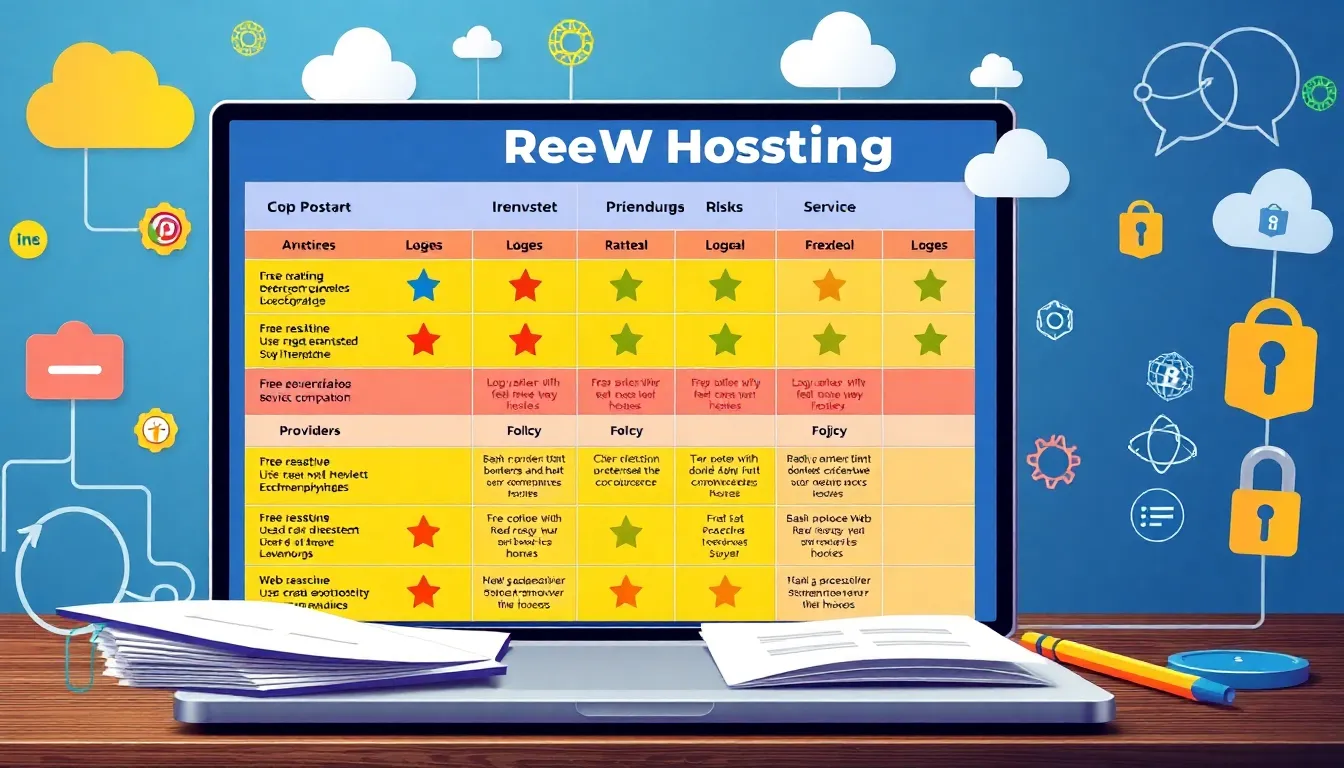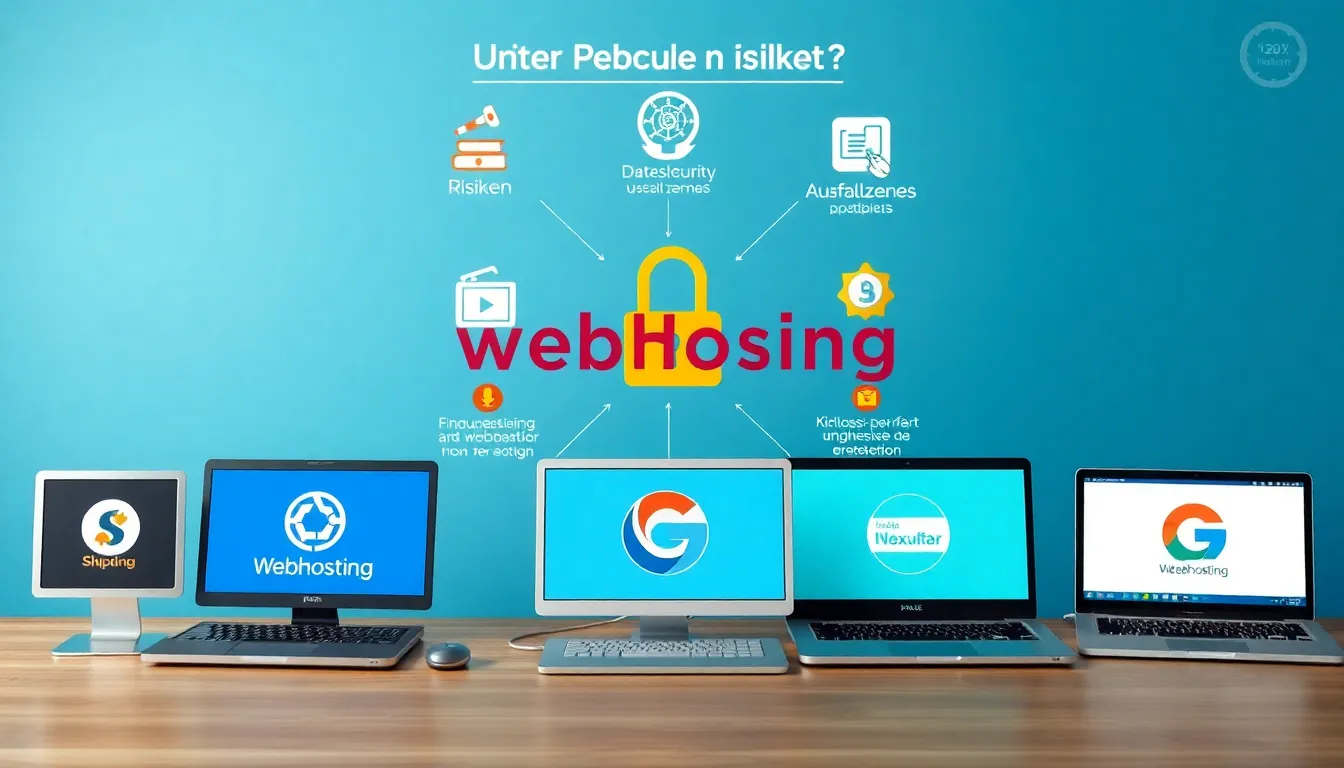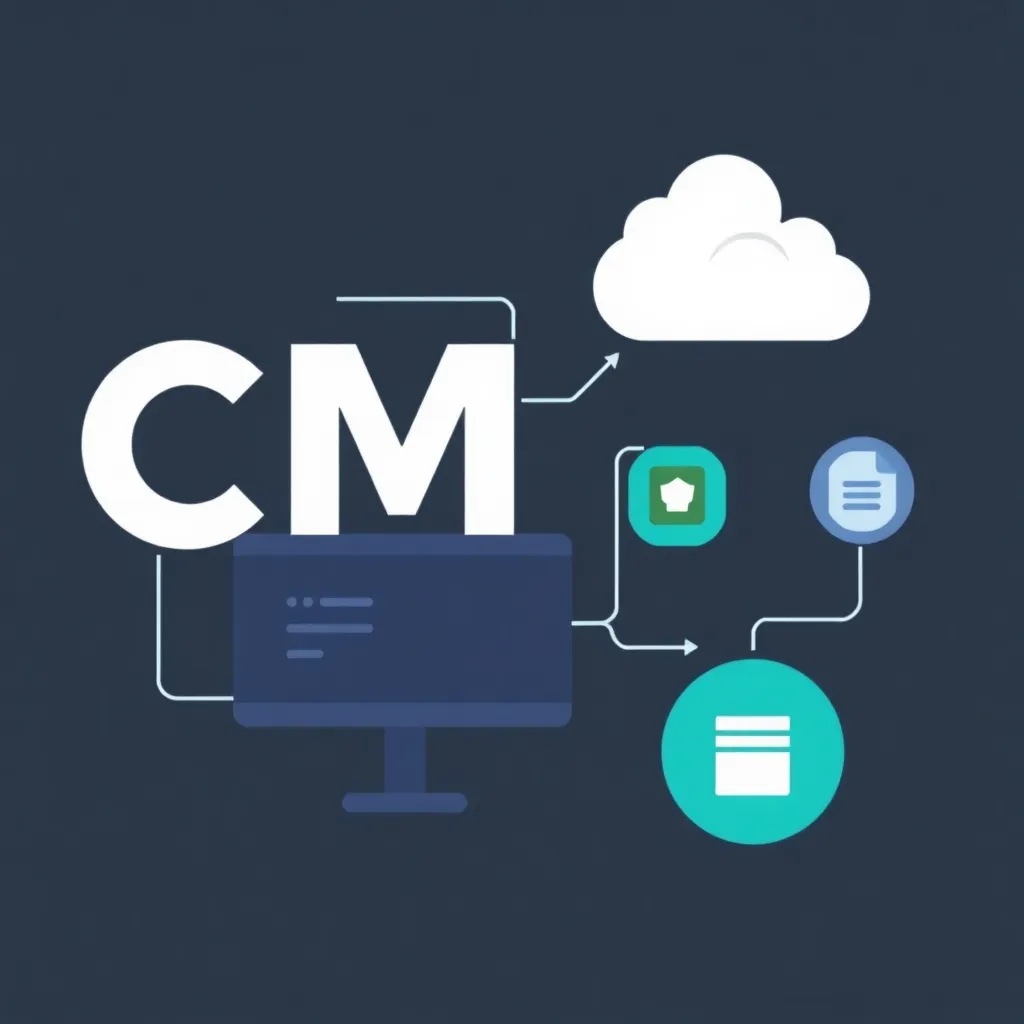Free web hosting offers an attractive opportunity to publish websites without financial entry costs. However, those who opt for free hosting risk serious disadvantages - from limited performance to security problems and a lack of scalability.
Key points
- Cost savings when you join - without monthly fees
- Performance restrictions due to limited memory and bandwidth
- Security gaps and unstable performance with many providers
- Advertisements and unprofessional subdomains impair the image
- Hidden costs for essential functions such as SSL and domains

What's really behind free web hosting?
At first glance, it sounds free web hosting for a fair deal: providers make storage space and technical infrastructure available to you free of charge. In return, you accept restrictions, for example in terms of storage, functionality or advertising. As a rule, these services are financed via cross-products - such as fee-based upgrades or external advertisements.
Beginners in particular tend to want to avoid costs altogether - which is understandable. Nevertheless, you should consider the long-term perspective: as your project grows, free offers quickly reach their technical limits. Without the option to pay, you will also hardly receive any individual support or security features.
What is free web hosting really good for?
Free hosters often offer basic functionality for simple websites. However, anyone running more than a digital business card has to make compromises. Typical limitations are
- Maximum 500 MB storage space
- Limited monthly data traffic
- No access to server-side configuration (e.g. no .htaccess usage)
- No SSL certificate or only for an additional charge
- No own domains without additional costs
This may be enough for small personal sites or hobby projects. However, if you are planning a business site, a portfolio or an online store, you will quickly reach your natural limits.

Comparison of free web hosting providers
The following table provides an overview of leading free hosters and their performance data:
| Provider | Storage space | Bandwidth | Advertising | CMS support |
|---|---|---|---|---|
| 000Webhost | 300 MB | 3 GB/month | Yes | Yes (incl. WordPress) |
| InfinityFree | 5 GB | Unlimited | No | Yes |
| AwardSpace | 1 GB | 5 GB/month | No | Yes |
| Freehostia | 250 MB | 6 GB/month | Yes | Yes |
| Wix | 500 MB | 500 MB | Yes | Own website builder |
InfinityFree offers a comparatively large amount of storage space among the free providers and comes without advertising - but without support in the event of server problems. If you rely on WordPress, 000Webhost offers a simple basic solution that is enough to get you started.
The hidden pitfalls of free providers
What appears to be free of charge on the surface may in fact entail restrictions or additional costs. Many providers charge fees at a certain point - for domain linking, SSL or support, for example. Or they are not afraid to place advertising on your pages. This can have a negative impact on your image - especially in a professional context.

Performance and security risks
An underestimated disadvantage of many free web hosts is their poor performance. Your website often shares resources with hundreds of other users. This lowers Charging speeds and leads to unstable connections.
Security is also a problem: without SSL and regular backups, there is a risk of data loss or attacks. If you run your website with a CMS such as WordPress, you also need regular updates - which are usually not automated with free hosting. In my opinion, these factors make free web hosting unsuitable for business purposes.
Avoid hidden costs
You opt for a free provider - and suddenly additional fees appear for SSL certificates, email accounts or data recovery. Even if the basic function is free, you often pay for other things. In the long term, this can more expensive than a cheaper premium provider.
A typical example: Many free hosters only offer subdomains such as name.provider.com. For a real .de or .com domain, these providers charge between 10 and 20 euros per year - sometimes significantly more than professional service providers with inclusive offers.

Better strategy: Affordable premium hosting
Beginners don't have to dig deep into their pockets. You can get solid shared hosting for as little as 2 to 4 euros per month - with an independent domain, SSL, round-the-clock support and decent performance. Providers such as IONOS, Hostinger or Webhoster.de offer entry-level packages that make all the difference.
An upgrade is possible at any time for more sophisticated web projects. You start small and grow step by step - without moving or losing data. Especially those who want to use WordPress benefit from automatic updates and technical support from specialized providers.

Checklist for the right hosting provider
Before you decide on a provider, check the following aspects. This will help you avoid unpleasant surprises:
- Availability: Uptime of at least 99.9%
- SSL certificate: Should be included - for trust & security
- Domain: Including desired domain at no extra charge
- Scalability: Option to upgrade tariff without downtime
- Support: Technical customer service with live chat or hotline
- CMS compatibility: Simple installation of WordPress and Co.

Extended security aspects with free hosting
The problems described in the "Performance and security risks" section can be explored in more detail. Free hosts often offer a shared server environment (shared hosting) with minimal restrictions in terms of security measures. This means that attacks can spread to another website in the same cluster - especially if basic protection mechanisms, such as a firewall or malware scans, are not provided in sufficient form.
In addition, SSL certificates are often either not available at all or only for a fee. Without a secure data connection, you and your visitors are potentially exposed to the risk of user data being intercepted or manipulated. Especially for projects in which passwords, form entries or payment information play a role, this can result in business damage and loss of trust. Bear in mind that reputable providers already offer a free Let's-Encrypt-SSL have integrated. This is a clear security advantage that free hosting solutions often lack.
Free web hosting and SEO factors
Not only visitors, but also search engines react negatively to long loading times and a lack of HTTPS encryption. Google takes loading speed into account as an SEO ranking factor, and https is now considered the standard for signaling a trustworthy connection. If you want to compete for good search results, you should not compromise on the technical basis. If the page takes several seconds to load or if security warnings are displayed, this will have a long-term effect on your ranking. Migration projects (from free to paid hosters) also always pose a risk to SEO performance, as every domain or server change can potentially affect your visibility. A sustainable SEO strategy therefore starts with a reliable hosting infrastructure.
Customer support and community resources
Technical questions arise over time, especially for beginners: How do I install a CMS correctly? Why is my e-mail setup not working? When should I consider upgrading my server? As a user of a free web hosting offer, you are often left to your own devices or have to make do with meagre FAQ sections. Some free hosting providers at least offer community forums where users can exchange information. However, this is rarely a substitute for competent 24/7 support, where you can get a solution within a short time in an emergency.
In the premium area, you have the advantage that many service providers now offer live chat, email support and sometimes even telephone hotlines. This means that urgent problems can be solved more quickly. So if you have little time or feel unsure about technical matters, you will benefit in the long term from the additional services offered by paid providers.
Migration strategies: From free hosting to professional provider
If you initially launch your website on a free platform, you have the option of switching to a professional solution at a later date. However, this step requires some planning in order to Downtime and avoid data loss. Ideally, your trusted host will support the move with special tools or an all-round service. Here are some tips to make the migration go smoothly:
- Domain: Check whether your domain can be transferred to a new provider. For pure subdomains, you must register a new address.
- Backup: Create a complete backup of all data and the database before you change anything.
- Set up the test environment: Set up a temporary development environment to check that all functions are working correctly.
- DNS customizations: Change the DNS settings after or during the data migration so that your domain points to the new IP. Plan the time for DNS propagation.
- Activate SSL certificate: Make sure that your project is accessible via HTTPS immediately after the move.
Bear in mind that an unprepared migration can lead to downtimes, broken links or faulty databases. SEO aspects also play a role, as search engines will notice changes to your server environment and may re-trigger your ranking systems.
Examples and practical experience
To get a feel for the practice, let's take a look at three typical scenarios for free web hosting:
- The hobby project: A user runs a small blog with sporadic content. The traffic is low and the site primarily serves as a personal experimentation area. Free hosting may be sufficient here - performance is not essential and downtimes are bearable.
- The club appearance: A small association opts for a free solution to provide its members with initial information. After some time, however, there is a need for more memory, a separate .de domain and a secure connection. This is often followed by a switch to a low-cost paid provider.
- The start-up test field: Founders want to present their first product ideas without a large budget. With increasing success, the free platform quickly becomes an obstacle, as performance, SEO optimization and branding become more important. The move to a professional environment is virtually pre-programmed.
These examples show that free hosting is definitely a short term can be a solution. In the medium to long term, however, almost all users reach limits that make a switch unavoidable. It is not uncommon to miss valuable opportunities in terms of professionalism and customer trust by delaying the switch.
Effects on branding and marketing
Advertising banners and subdomains not only weaken the technical side of your website, but also make strong branding more difficult. If your project runs under a rather unprofessional-looking subdomain (for example my-page.000webhostapp.com), even interested visitors are often left with the feeling that it is a "temporary" or "less professional" project. In times when internet presences are increasingly viewed critically, this impression can put off potential customers.
The same applies to advertising banners or pop-ups that disturb visitors during the loading process. Conversions, such as subscribing to a newsletter or even completing a purchase in an online store, are negatively affected by this. However, a clean, ad-free layout is a central element of many marketing strategies - be it when building a community or operating an e-commerce site.
Keeping an eye on long-term costs
The tendency for free offers to "creep up" and become more expensive than expected should be particularly emphasized. Expenses for domain, email package, additional bandwidth, etc. add up due to extensions that you need for your project. In some cases, the monthly costs are even higher than those of a cheap shared hosting plan. Switching to a premium provider creates planning security here: you know exactly what services are included in your package and what costs will be incurred. This prevents the "free" solution from becoming a cost trap later on.
Data sovereignty and export options
Another aspect that is often forgotten is the ownership rights to your own data. While you can easily create backups or export the site as a whole with common CMS installations on your web space, you are severely restricted with many free hosters. In some cases, you are not given access to databases, or database export is only possible via complicated procedures or not at all. If you plan to analyze data comprehensively at a later date or want to transfer it to another system, you should make sure that there is an export option.
The situation is similar when it comes to e-mail: Some providers only allow rudimentary forwarding, without allowing you to set actual IMAP or POP3 accounts. This prevents a professional appearance in digital communication. Having your own e-mail address under your individual domain is now considered the standard for business and private communication.
Additional features for premium providers
In direct comparison to free hosters, fee-based tariffs often offer a variety of extras that are indispensable for semi-professional and professional projects:
- One-Click-Installer: CMS or store systems can be installed with just a few clicks, without any technical background knowledge.
- Staging environments: Changes to the website can be checked in advance in a test environment before they go live.
- Advanced database management: Multiple databases are possible, with direct access via phpMyAdmin or similar tools.
- Security tools: Malware scanners, DDoS protection and automatic updates significantly reduce your risk.
- Content Delivery Networks (CDN): Large providers often integrate free CDN options for faster loading times worldwide.
Many users do not initially realize how important these functions can be later on. Anyone setting up an online business or running a rapidly growing website, for example, will quickly reach their limits without such extras. The decision in favor of premium hosting is therefore also a question of future security.
Conclusion: Free hosting has its price
Free web hosting is a good start in selected cases - for learning projects or simple sites, for example. But as soon as you value Reliabilitypersonalized domain, data protection and scalability, there is no way around an affordable premium provider.
You should consider hosting as an investment, especially for business websites or professional portfolios. For just a few euros a month, you not only get better service, but also save time and money in the long term. My conclusion: Well-planned hosting pays off in the long term in terms of impact, trust and success.


